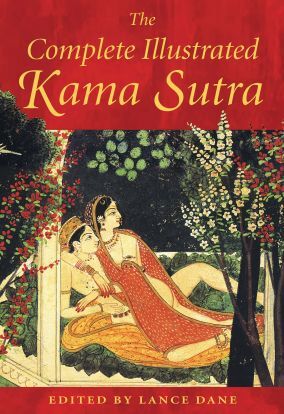Ancient India: Origin of the Kama Sutra
 Episode 15 Brahmanic Synthesis
Episode 15 Brahmanic Synthesis
A History of India
Michael Fisher (2016)
Film Review
From the 3rd century BC to the 8th century AD, Brahmanism (the precursor to modern Hinduism) absorbed many features of Buddhism and Jainism (especially their emphasis on nonviolence and asceticism). This would require revision of the traditional Veda.* With the movement of the merchant class into cities in 500 BC, many of its original precepts no longer applied.
Brahman priests also composed a number of Shastras applicable to urban life.
The Dharmastrastras – a manual focused on morality and the history of the Varna and Jatis,*The Arthashastras – a manual of material powerThe Kamashastras – a manual of sensual pleasureThe Natyashastras – a manual of performing artsThe Vastushastra – a manual for architectureThe Shilpashasera – a manual for sculptureThe Dhamashastras
These describe three levels of Brahman priests:
Some perform vedic ritualsSome withdraw from society into the forest to contemplateSome practice asceticismAccording to the Dhamashastras, individuals born into higher varna (Brahman, Kshatrya and Vaishya) process through four stages of life: student life, household life, retired life and renounced life. Each is associated with a specific samskara or rite of passage. Children are initiated into student life by donning a sacred thread to signify being twice born. Only about 10% of modern India qualifies as being twice born.
After being twice born, higher caste members attach themselves to a guru for a 36-year period to learn the Veda. The student must remain celibate, live on donated food and be totally obedient to his guru.
The next rite of passage is marriage to a healthy virgin from a religious family with a history of producing sons.
Retiring into the forest, the third stage of life, is open to women as well as man.
The final stage, renounced life, follows a symbolic cremation after which devotees leave their family and only eat when fed.
The Arthrashastras
The Arthrashastras address the interests of a rising merchant class, with an emphasis on marriage and the role of kings. While it stresses the obligation of brides to pay a dowry, it allows women more control of their dowries. It also allows a woman to divorce her husband if he stays abroad too long and a man to divorce his wife if she fails to produce a son after eight years.
It also describes how low born individuals can become debt slaves but must be set free if they pay their debt. It forbids masters from forcing slaves to perform “polluting” work or sexually abusing female slaves.
It describes the role of craft guilds to set wages, prices and working conditions, as well stipulating how much color fading subjects launderers to a fine and prescribing fines for medical ma;practice.
The Kamashastras (aka the Kama Sutra)
This manual is mainly directed at courtesans, guiding them in controlling their senses to improve their ability to derive profit from sensual pleasure. It lists 64 arts courtesans should become adept in, including seduction, kissing, touching, intercourse, music, art, carpentry, singing, gymnastics, archery, chemistry and magic.
Film can be viewed free with a library card on Kanopy.
The Most Revolutionary Act
- Stuart Jeanne Bramhall's profile
- 11 followers



